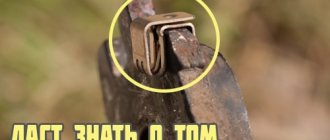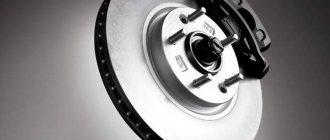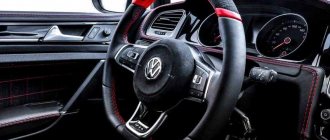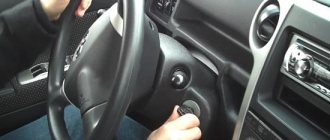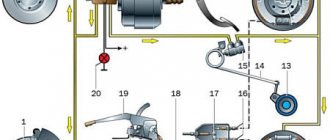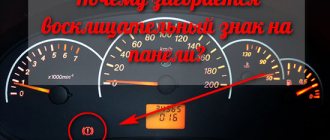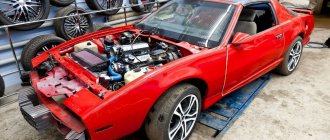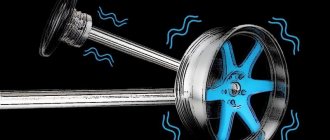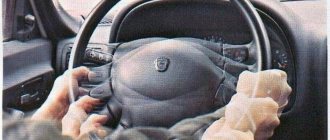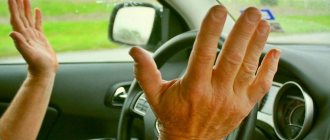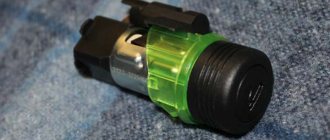Eliminating squeaking brake pads.
Can't cope with the terrible whistle or squeaking of brake pads? Or maybe you are annoyed by the terrible sound when braking and you don’t know what to do about it? Have you just, very recently, changed your brake pads, but as a result of this, an unpleasant squeak or whistle appeared when braking? Don’t be upset, friends, in fact, you can fix everything yourself.
Before moving directly to the description of a method that will help you get rid of squeaking brakes, we would like to note the following that not a single auto mechanic will help you make a completely silent brake system. In either case, when you press the brake pedal hard, you will hear a certain squealing sound from the brake pads or brake drums. However, in most cases, it is still possible to get rid of an unpleasant squeak or whistle in this mechanism. You can read more.
Dirt
When the pads become dirty, they make a squealing sound when braking. The same thing happens when rust occurs. An unpleasant sound appears if the car has been parked in the garage for a long time.
Sometimes, for a squeak to appear, it is enough to stand for one day outside or in a room with a high level of humidity. In this case, the squeal disappears by itself after 5-10 trips.
A squeaking sound often appears after sand gets into the area between the pad and the disc. Such situations occur after heavy rain. After a few days the sound disappears.
What causes your brakes to squeal?
Modern brakes consist of metal brake discs that are sandwiched between two pads coated with a friction material. When the discs, caliper and brake pads are or are in perfect condition, the entire system works properly and when you press the brake hard, you will not hear any unpleasant squealing sound. Yes, we do not argue that when braking sharply, any driver hears the squealing of the brake system, but it will remind them more of the sound of a correctly tuned violin than the same playing of a Scottish bagpipe by a non-professional.
Just as for the normal sound of all musical instruments, a tuner is needed, so for the normal adjustment of the brake system, you need a specific professional auto mechanic who, in the event of a brake malfunction, will be able to adjust the brake system of your car to optimal operation.
Unusual cases of grinding noise on the front and rear wheels
The route map is designed for standard circumstances, when squeaking appeared on old pads during soft braking or immediately after replacement. What to do if everything was fine in the summer, but with the advent of cold weather a squeal appeared? Or what to do if a squeaking noise appears even when the brake pedal is released? Look for answers in a special selection:
- The brakes began to squeak in the cold. During a thaw, moisture may settle on the discs. If the process is regular, lubricate the back side of the pads.
- Whistle even when the brake is not pressed. Overhaul the brake calipers. Make sure that they move freely along the guides and that the working cylinders do not jam.
Normal brake noises
Many brake pads squeal or squeak, which usually occurs during the first few braking sessions after the vehicle has been parked overnight. As a rule, this squeak goes away after the brake pads heat up and do not expel the moisture that has accumulated in them overnight.
Dear friends, you have probably encountered grinding brake pads, especially in rainy and damp weather in the morning? Don't be alarmed, this is normal, because a thin layer of rust has formed on the brake discs overnight due to the moisture they contain.
Previously, asbestos was used as a friction material on pads. Fortunately, as a result of research, doctors have proven that asbestos can cause lung cancer and therefore they decided to completely abandon the use of this material to cover brake pads.
Currently, alternative types of materials that are less hazardous to human health are used as friction materials. For example, in recent years, the use of a combination of metal and ceramics as a coating for pads has become increasingly popular. This is primarily due to the fact that in recent years the global automotive industry has been developing towards reducing the weight of all vehicle components. Therefore, reducing the weight of the braking system is an important task for all automobile companies.
But due to the use of these new friction coatings, when braking a car, an unpleasant creaking (squealing) etc. may appear. in the brakes. This is a very small price to pay for increasing the power of modern cars, which occurs due to the lightening of all parts of the vehicle.
Also, do not confuse the standard squeak of brake pads with the squeak when they (these pads) have reached 80% of their wear. Let us remind our readers that most brake pads begin to squeak at the moment when the friction layer on them is almost worn out. This is done so that the owner of the car, without any diagnostics, can basically find out that it is time to replace the old pads with new ones.
Use of non-original/low-quality parts
Any car owner who uses non-original parts when servicing brakes for reasons of economy and buys them from a third-party supplier sometimes faces the problem that the parts do not fit together one hundred percent. A small gap remains, or, conversely, the same pads have to be almost driven into the seats. All this gives additional discrepancy between the parts.
Plus, low-quality pads (more often), discs (less often) can be made of cheap materials interspersed with solid particles, which will certainly start squeaking at the first opportunity. Therefore, car brakes are not the place where you can save money.
Bottom line: if the squeaking noise does not disappear after a short time, it is probably due to the quality of the parts that do not fit together perfectly.
How to reduce squealing brake pads?
One of the most effective ways to get rid of squeaking or whistling when braking is to change the pads to others that use a different friction material. True, as many people know, it will be problematic and difficult to purchase non-original pads that will match and therefore work better than the original pads, but, nevertheless, this is possible today.
Please remember that the more expensive the pads, the more expensive their friction coating, on which their successful operation depends, that is, whether an extraneous sound will appear during braking or not.
Also, you can reduce the squeaking or whistling of brakes when braking in another way, namely, by lubricating the pads with a special compound(s). Dear friends, we do not recommend that you use for this purpose various oil compounds and WD-40 with them, which are used to reduce the friction of the friction coating of the pads with the brake disc, since all this can affect the effectiveness of the braking itself, which will certainly reduce your own safety.
In addition, before installing non-original pads, you can first remove all the metal burrs that are on the pads using sandpaper, and then paint all the ends with fire-resistant paint. This way you can achieve a reduction in excess gaps between the friction coating and the surface of the brake disc.
In particular, before directly installing the pads into the caliper, lubricate the guides themselves with graphite lubricant.
If, after preparing the pads and lubricating the guides in the caliper, the squeaking of the pads has not disappeared and still continues to torment you on the road, then please check the brake discs for wear, thereby measuring the thickness of the brake discs and the uniformity of their wear.
If the brake discs are in perfect condition and the brake pads are prepared in accordance with our recommendations, and the whistle still appears when braking, then it would be better to replace these pads with other new ones, namely, buy original pads for the car directly from the dealer.
Remember, dear motorist friends, that by purchasing any spare parts for a car other than from a dealer, you risk purchasing counterfeit products that will not last as long as real original spare parts.
Which pads to choose as a replacement: a review of manufacturers
Manufacturers of basic vehicle components who supply their products to the automobile assembly line have a special status. In the international market, such manufacturers are called Original Equipment Manufacturers (or OEM).
Components produced by OEM companies are considered original, are sold through official dealers and are more expensive than analogues. The price is due to high quality, confirmed by numerous tests before release into assembly line production.
A lower class are suppliers of spare parts and consumables for after-sales service of cars (Aftermarket in international terminology). Despite less stringent control before being released to the market, this product still meets all the declared braking characteristics and is suitable for distribution in the secondary automotive market, while being 30-40% cheaper than similar OEM products.
OEMs can supply their products both to the production line (directly or through an intermediary) and to the automotive aftermarket.
On sale you can find brake system parts from unknown manufacturers at suspiciously low prices, sometimes reaching 20% of the price level of OEM analogues. You should always question the quality and reliability of such options.
The following manufacturers are especially popular among Russian car owners:
- ATE (Germany) The products of this company (in particular, the Ferodo and Brembo brands) have good reviews from fans of sports cars due to the fact that they are able to operate under increased loads.
- TRW This is a holding company that includes Lucas and Remsa, well-known companies in certain circles. The products are aimed at the mass market and are suitable for both aggressive driving styles and more moderate driving.
- Akebono, NIBK (Japan) This popular Japanese company is known for the development and implementation of innovative materials for car friction parts.
- Samko (Italy) The company offers a wide selection of products for all kinds of driving conditions.
- Bosch One of the most famous companies in the world also produces brake pads. However, recently the brand has been losing its leadership position in the industry.
- STS (Russia) A domestic manufacturer offers products with an acceptable price-quality ratio and is aimed at the budget car market.
Product user surveys, while important, do not always provide a complete, objective picture. For products that ensure safety, objective quality criteria must be met during the production process. These criteria are formulated based on the results of the tests. In particular, the quality criteria for brake pads in force in Russia are defined in the UNECE (Economic Commission for Europe) rules.
For testing, stands are used where brake pads are tested under various loaded conditions of the material. This combines different driving speeds, temperature conditions and braking forces (pressure in the hydraulic system).
During the tests, the most intense mode is a set of FADE cycles, simulating the movement of a car along a serpentine road. This simulation of braking involves applying a constant force to the material several times at 45 second intervals.
Such tests are still unable to fully recreate the random loading conditions associated with driving style and traffic conditions. In addition, testing on benches is limited in time, which means it is impossible to fully assess the durability of the material.
Environmental conditions, including changes in air temperature, exposure to precipitation and road chemicals, also cannot be reproduced in bench tests. However, the results of these tests can be used when comparing similar products from different manufacturers. Moreover, these results will be of interest not only to specialists, but to ordinary car owners.
In Russia, tests are carried out at the Scientific Research Automotive Institute (NAMI), and the results are published both in specialized literature and in publications for the mass consumer.
The results of tests conducted at NAMI allowed us to compile a rating of the popularity of brands for foreign cars. The Ford Focus II model was chosen as an example. The brands listed above are ranked as follows:
- Bosch Shows the lowest wear rate and very effective braking in high temperature conditions.
- Ferodo Shows the highest braking performance, but at the same time the highest wear rate.
- Brembo is distinguished by the most stable braking results of all in all modes.
- TRW The results in each mode are average, except for the “serpentine driving” mode at elevated temperatures, where the brand received an unsatisfactory rating.
In general, if the pads squeak when braking on a car and the question arises about selecting and replacing these elements, you should focus not only on prices, but also on how a particular product behaves in various conditions, taking into account driving style.
What to do to make new brakes stop squeaking when braking the car at low speed
Actually, if nothing was done before the grinding noise appeared, then this is a call to at least inspect the area around the calipers. Where to look has already been discussed; these cases do not require additional comments. An interesting list of actions in relation to fresh pads, which after installation began to squeak. Replacement immediately is not an option, this is a last resort method.
Lapping in
Give the friction linings time to grind in. After several hundred kilometers of city travel, their working surface will be in full contact with the disk, and this is a reason to stop the whistling, but not the only one.
Material quality
Some motorists, wanting to save money, purchase cheap and low-quality products from waste raw materials. Usually these are either fakes of original products or pads from unknown Chinese manufacturers.
Friction materials for pads must be soft enough to lightly grind the disc while maintaining the desired friction area. On the other hand, they must have the necessary strength and resistance to elevated temperatures so as not to collapse during operation.
Each manufacturer has its own patented pad formulation, consisting of dozens of fillers, additives, abrasives, and binding components.
Cheap asbestos pads for city cars have been replaced by organic ones - filled with graphite and aldehyde polymers. The operating temperature is low - 4000C. Their peculiarity is that they must warm up during the first 100 km, otherwise there is a risk of not only excessive noise, but also destruction.
More stable metal and semi-metallic pads combine the strength of metals (steel, cast iron) and synthetics. If a cast iron block lasts an average of 1 year without complaints, then cermets can be left unchanged for up to 6 - 8 years, of course, with careful use and care.
It has been proven that friction materials with brass and steel coarse inclusions are more likely to wear out discs than fine-grained aluminum and copper additives.
Note: constructive measures aimed at preventing whistling
A microscope is not needed to examine engineering tricks. They are of a purely technical nature. We have already talked about one of them - anti-squeak linings on the back of the products. Find out about other means of combating vibration below:
- Bevels and slots on the friction layer move resonant vibrations to higher frequencies.
- The slots perform a role similar to bevels + remove dirt from the contact patch.
- Anti-vibration plates dampen vibrations relative to the piston and caliper bracket.
- Specially curved elements on the back of the pad fit tightly into the working cylinder, which helps to avoid noise in many braking modes.
- Wire brackets dampen vibrations of the friction part along the guide.
- Damping bushings are installed on one of the caliper guide fingers to absorb vibrations.
Poor product quality
Brake pads are manufactured using approved and patented recipes and technologies. Only large manufacturers have the necessary technical and engineering base to create pads from innovative and proven materials. Cheap products from unknown manufacturers do not last long and quickly break down, and at the same time, they can provoke an emergency situation on the road.
Cheap products often contain harmful and coarse impurities that damage the disc and pads during operation.
Manufacturing defects
There is an unspoken rule: the smaller and more unknown the manufacturer’s brand, the greater the likelihood of purchasing a defective product. Only at large factories of well-known manufacturers there is control over product quality and the ability to make the necessary changes to production technology.
Small brands don’t care about quality; the main thing for them is to sell all their products without rejecting products with defects. When purchasing, you always have the opportunity to inspect the parts, study the instructions and the availability of safety and quality certificates.
